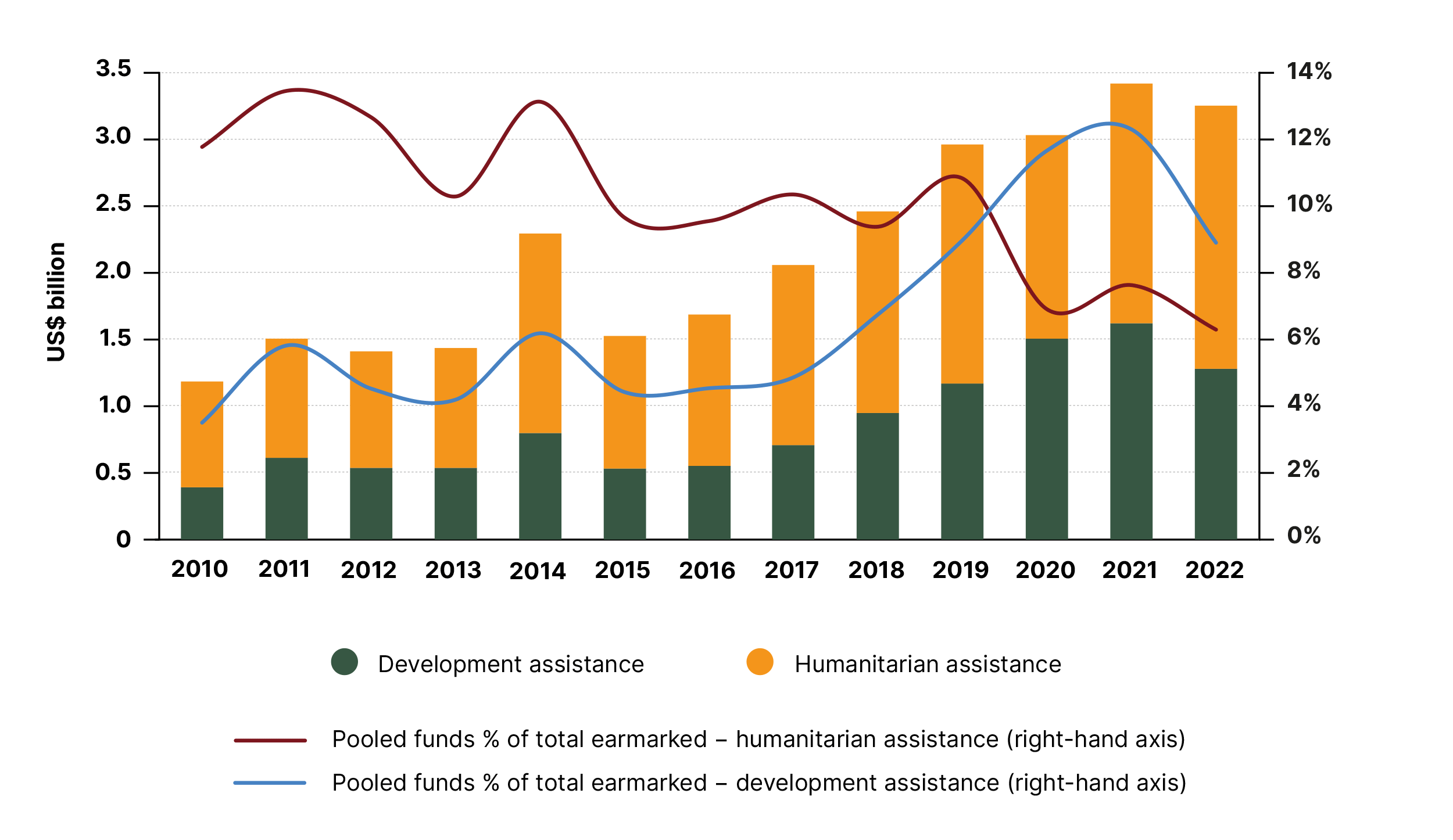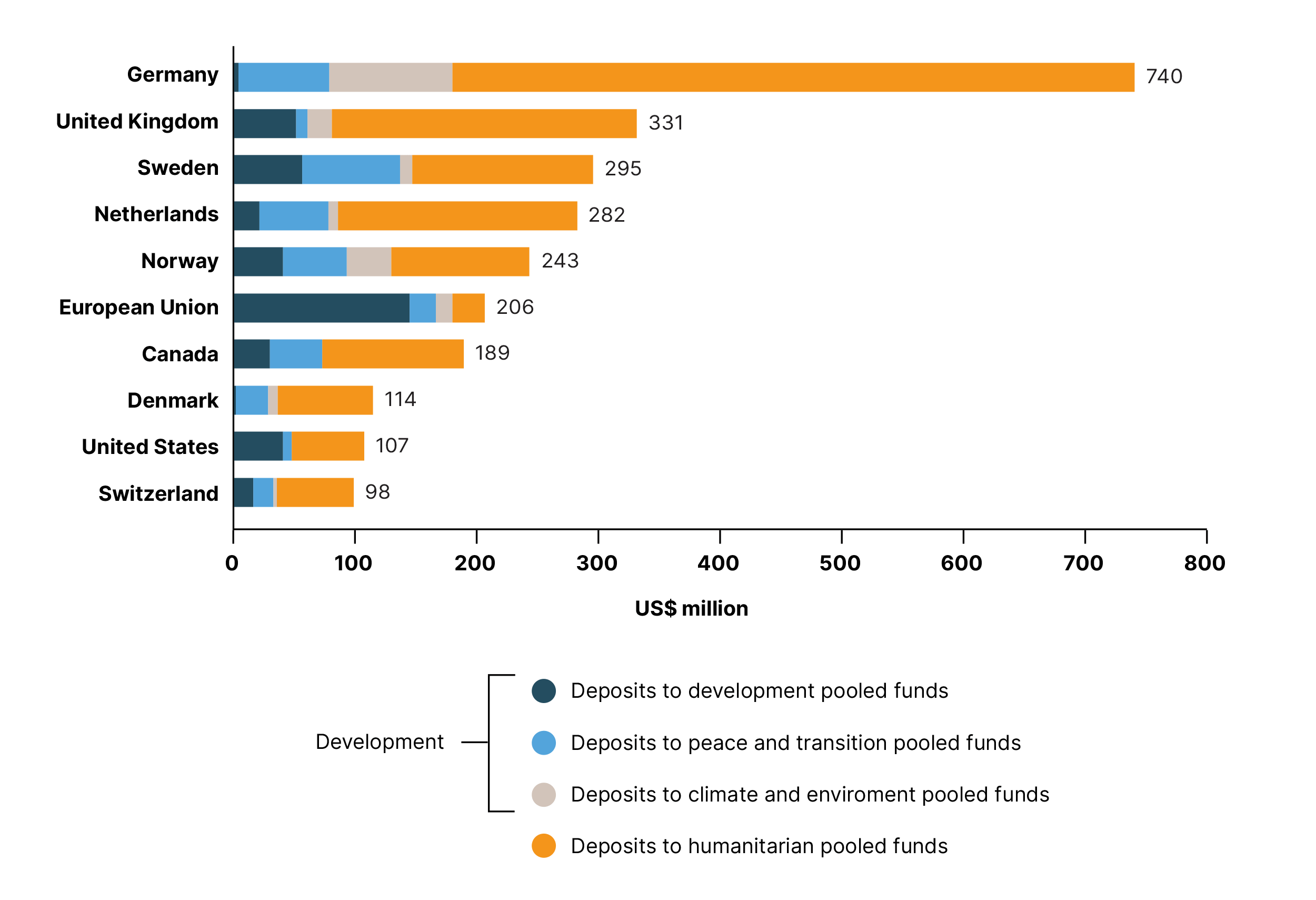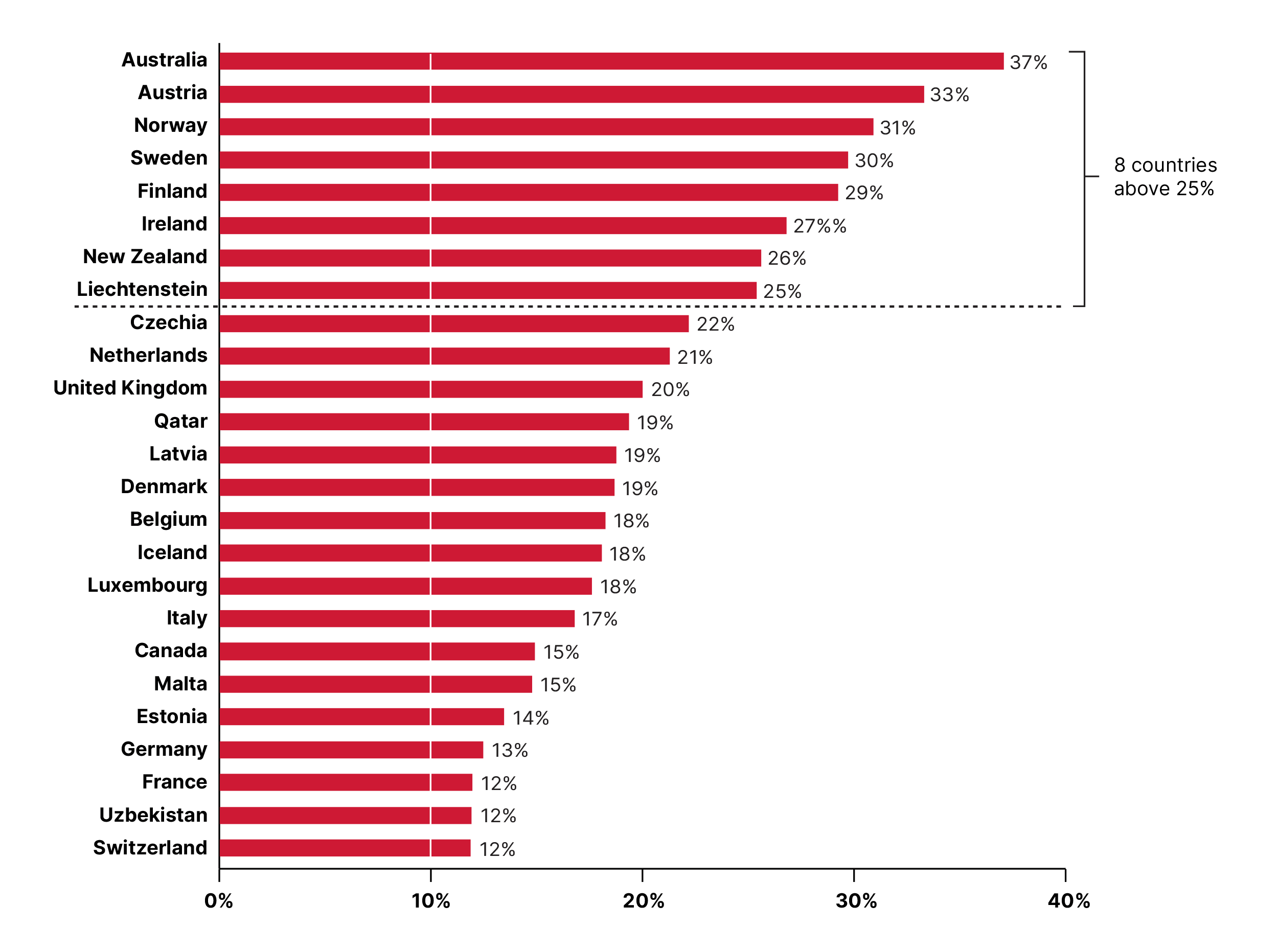
News & MediaUN pooled funding trends
The following section includes data and analyses adapted from the report "Financing the UN Development System", which is annually prepared by the UN Multi-Partner Trust Fund Office and Dag Hammarskjöld Foundation. |
|---|
UN inter-agency pooled funds strengthen coherence and coordination within UNDS entities, serving as a platform for giving voice and visibility to key stakeholders – from donors to implementing civil society organisations. These funds support multi-stakeholder partnerships involving a specific thematic and/or geographic focus. Funds may address broad global or regional cross-border challenges through multi-partner trust funds (MPTFs), or more specific national concerns through country-level MPTFs or standalone pass-through joint programmes.
At a country level, multi-stakeholder collaboration enables various partnerships to coalesce under a common results framework, thereby fostering implementation of national development plans and facilitating programmatic funding across various in-country priorities. When utilised to finance a country-level United Nations Sustainable Development Cooperation Framework (UNSDCF)20, inter-agency pooled funds serve as ‘core-like’ resources capable of supporting a wider results framework while providing scope for flexibility.
Figure 1. shows the annual contributions received by UN inter-agency pooled funds since 2010, disaggregated by thematic area. Total contributions have nearly tripled from US$ 1.2 billion in 2010 to US$ 3.3 billion in 2022. While contributions to humanitarian pooled funds more than doubled from US$ 0.8 billion in 2010 to US$ 2.0 billion in 2022, it was development-related pooled funds that experienced the largest proportional growth during this period, from US$ 0.4 billion to US$ 1.3 billion.
Over the 2010–2022 period, humanitarian funds constituted roughly 60% of all the contributions received by UN interagency pooled funds, reflecting a long-term trend of pooled funding being used to respond with flexibility to humanitarian needs. Contributions to development-related funds represented 39% of pooled fund contributions in 2022 and 8.9% of all earmarked funding to UN developmentrelated activities, falling below the original Funding Compact target of 10%. Additionally, after six consecutive years of growth, contributions to development-related inter-agency pooled funds decreased from US$ 1.6 billion in 2021 to US$1.3 billion in 2022 – a 21% reduction. Contributory factors to this particularly low level of capitalisation include the closing of the inaugural phase of the Spotlight Initiative Fund and reduced levels of funding for the Joint SDG Fund and the Peacebuilding Fund.
|
Between 2010 and 2022, inter-agency pooled funds for development assistance nearly tripled |
Figure 1. Deposits to UN inter-agency pooled funds 2010–2022 (US$ billion)

Who are the main contributors to pooled funds?
Figure 2. lists the top 12 contributors to inter-agency pooled funds in 2020. The top contributors remained the same as in 2019, accounting for US$ 2.8 billion, or 92%, of the total resources provided to these funds. All of these donors, aside from the EU, directed more than 10% of their earmarked funding to inter-agency pooled funds – in the cases of Belgium, Ireland and Netherlands, inter-agency pooled funds accounted for almost half their earmarked funding to the UN.
Figure 2. Deposits to UN inter-agency pooled funds from the top 10 contributors, 2022 (US$ million)

The top ten contributors provided 80% of the resources UN inter-agency pooled funds received in 2022. There are some shifts in the ranking compared to 2021, with the United States entering the group in ninth place and Switzerland in tenth. German funding to UN inter-agency pooled funds continued to be noteworthy in 2022, with the CERF (US$ 146 million) and the Afghanistan Humanitarian Fund (US$ 114 million) receiving the highest volume of contributions. Germany, the United Kingdom, the Netherlands and Denmark displayed a strong focus on humanitarian pooled funds, while Germany and Norway contributed significantly to climate and environment funds. The growing urgency of combatting climate change means the importance of climate and environment funds within the UN inter-agency pooled funds portfolio has increased accordingly. These funds have grown from a modest US$ 43 million in 2015 to US$ 231 million in 2022. Driving this positive trend is the Central African Forest Initiative (CAFI), which received funding in excess of US$ 150 million in 2022, equivalent to 65% of the total funding allocated to UN climate- and environment-related inter-agency pooled funds.
|
|
Climate and environment funds have grown from US$ 43 million 2015 to US$ 231 million 2022 |
Figure 3. 25 countries surpassed the 10% threshold for channelling earmarked contributions to development assistance through inter-agency pooled funds in 2022. This group includes all the top ten Member State contributors to inter-agency pooled funds aside from the United States. As previously mentioned, one of the Member State commitments set out in the new Funding Compact is to provide 30% of non-core contributions for development activities through inter-agency pooled funds by 2027. Four Member States – Australia, Austria, Norway, and Sweden – are already fulfilling this commitment, while Finland, Ireland, New Zealand, and Liechtenstein are closing in on the target, having surpassed the 25% mark.
|
Member State commitments set out in the new Funding Compact is to provide 30% of non-core contributions for development activities through inter-agency pooled funds by 2027. |
Figure 3. Countries contributing over 10% of their total earmarked funding to the UN through inter-agency pooled funds, 2022

Which are the main implementing UN entities?
Turning to those at the receiving end of inter-agency pooled funds, Figure 4 illustrates which ten UN entities are the largest implementers of pooled funds and disaggregates the resources they receive by the fund’s thematic area. The figure is divided into two parts: the first shows the top ten entities for 2022, while the second shows the top ten entities for the period between 2016 – when implementation of the SDGs began – and 2022. In 2022, the UN Secretariat received US$ 410 million from the MPTF Office as fund administrator for six countrybased humanitarian pooled funds, under which OCHA also managed contracts with NGO recipients (Afghanistan, Central African Republic, the Democratic Republic of Congo, South Sudan, and Sudan).
Figure 4. Top ten UN entities that receive the highest revenue through inter-agency pooled funds, 2019–2022 (US$ million)

In which countries do inter-agency pooled funds contribute to development results?
Figure 5. shows a clear trend towards more countries benefitting from inter-agency pooled funds. Looking at the top three countries, both Tuvalu and Gabon received resources from the Peacebuilding Fund. In the case of Papua New Guinea, the 83% of earmarked development funding channelled through UN inter-agency pooled funds came mainly from two country funds: the Papua New Guinea UN Country Fund administered by MPTF Office, and Support to Rural Entrepreneurship, Investment and Trade in Papua New Guinea (STREIT PNG), administered by FAO. Some programme countries have also enhanced implementation of their national Cooperation Framework by investing in country-level pooled funds and accelerating SDG attainment. In 2022, Montenegro provided funding to the Montenegro UN Country Fund, while Uzbekistan did likewise for the Aral Sea UN Human Security Trust Fund for the Aral Sea in Uzbekistan.
Figure 5. Countries where 15% or more of earmarked development-related expenditure comes from UN inter-agency pooled funds, 2022 (34 countries)

